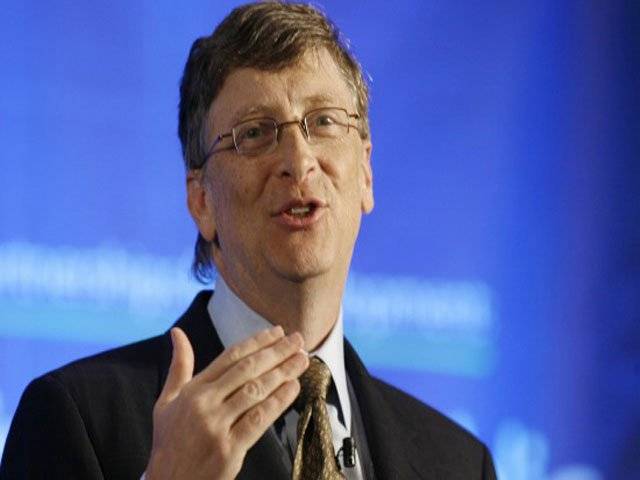Fifty years ago, almost 20 million children under the age of 5 died every year. In 2010, the figure was down to 7.6 million . This 60 percent decline in childhood deaths reflecting advances in agriculture, education, health and sanitation is compelling evidence of the increasing justice in our world. But the global economic crisis is putting the long-term trend of progress at risk, as Congresss debates about the foreign aid budget underscore. I am giving a report Thursday to the heads of the Group of 20 governments, including President Obama, suggesting creative ways for the world to continue investing in development despite fiscal constraints. I hope three key ideas become part of congressional deliberations over the coming weeks. First, programs funded by US generosity have been a core component of this 50-year project of raising living standards around the world. Aid is targeted to fill specific gaps in development. The most important of these gaps is innovation. When the private sector doesnt have incentive, and poor governments dont have the money, smart aid pays for breakthrough solutions. The green revolution that fed a billion people in the 1950s and 60s never would have happened without advanced agricultural science funded by US aid. In just the past 10 years, millions of children have been saved from diseases such as measles and whooping cough by vaccines that Americans paid for through their contribution to an organisation called the GAVI Alliance. Immunisation is a great example of how aid can be effective. Thirty-six cents worth of measles vaccine protects a child for a lifetime. Second, development isnt just good for people in poor countries; its good for all of us. It used to be that the world was, roughly speaking, one-third rich and two-thirds poor. Now, the number of dynamic, healthy, highly educated countries is much higher, which is a recipe for prosperity. Imagine the world economy without Brazil, China, India, Indonesia, South Korea, Mexico or Turkey. If countries that are currently poor can feed, educate and employ their people, then over time they will contribute to the world economy. On the supply side, theyll increase the production of key commodities such as food, keeping prices lower. On the demand side, as their citizens are more productive, theyll become important markets for trade. But if people dont get access to basic necessities, continued suffering will lead to economic stagnation and instability. It is, for example, not only unconscionable but also a strategic mistake to allow famine to devastate the livelihoods of millions of people in the Horn of Africa. Third, the United States is not doing development alone. We spend about 1 percent of our total budget on aid, as do dozens of donor countries. And with only a few exceptions, the amount poor countries spend on their own development is much greater than the amount donors invest. Ethiopia, for example, has in the past five years built 15,000 rural health posts to provide improved services for its citizens. There is also a group of rapidly growing countries including Brazil, China and India that combine recent experience with development and significant technical capacity, giving them the insight and the skill to have special impact. For instance, China is sequencing 10,000 varieties of rice to help small farmers cope with climate change. These efforts can make a big difference. For example, a new submergence-tolerant rice variety being used in flood-prone areas of Bangladesh and India can more than double farmers yields. We predict that 20 million farmers will be planting this variety in the next six years. The private sector hasnt always invested as much in development as it should because the market incentives havent always been clear, but there are ways to encourage involvement. In my report to the G-20, Ill make half a dozen recommendations for mobilizing tens of billions of dollars annually from private sources. The African diaspora is sitting on $50 billion in savings that could fund development in their home countries if it were captured through diaspora bonds. If the transaction costs on remittances worldwide were cut from an average of 10 percent to an average of 5 percent, it would unlock $15 billion a year in poor countries. In addition, there are trillions of dollars in sovereign wealth funds, and a portion could be reserved for key infrastructure projects in poor countries. Sometimes Americans get the impression that were shouldering the whole burden of development and that, ultimately, our aid doesnt make a big difference. I see it very differently. Were providing strategic investments that link up with many other investments to systematically make a better, more prosperous and safer world. If we do it right, we can keep shrinking the number of countries where aid is needed to zero. The writer is chairman of Microsoft and co-chair of the Bill & Melinda Gates Foundation. The Washington Post
Friday, April 19, 2024
Bill Gates plan to assist worlds poor

The writer is a business magnate and philanthropist. This article has been reproduced from Today’s Zaman.
9:58 PM | April 18, 2024
King Charles's cancer ‘eating him alive,' monarch unable to perform duties: Insider
1:02 AM | April 19, 2024
Mehwish Hayat says she would like to work with Aamir Khan
9:59 PM | April 18, 2024
What caused record-breaking rainfall in UAE?
9:58 PM | April 18, 2024
Donald Trump discusses Ukraine, Middle East, NATO with Polish President Duda
9:57 PM | April 18, 2024
'That'll be awesome,' Rohit Sharma on idea of Pakistan vs India Test series
9:17 PM | April 18, 2024
Hepatitis Challenge
April 18, 2024
IMF Predictions
April 18, 2024
Wheat War
April 18, 2024
Rail Revival
April 17, 2024
Addressing Climate Change
April 17, 2024
Justice denied
April 18, 2024
AI dilemmas unveiled
April 18, 2024
Tax tangle
April 18, 2024
Workforce inequality
April 17, 2024
New partnerships
April 17, 2024
ePaper - Nawaiwaqt
Advertisement
Nawaiwaqt Group | Copyright © 2024





